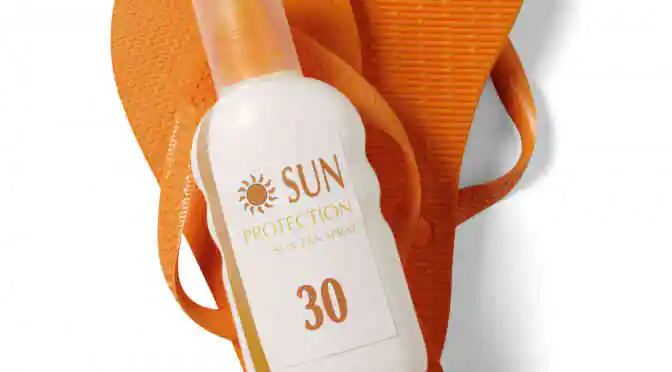A day at the beach is much more dangerous now than it was just a year ago. According to NASA, global temperatures have increased by more than 0.8 degrees Celsius (1.4 degrees Fahrenheit) since 1880. Last year, global temperatures were roughly 1.2 degrees Celsius warmer than pre-industrial temperatures, and they are expected to increase again during 2017. Global warming is raising the Earth’s temperature and is leading to the depletion of the ozone layer, making humans more vulnerable to UV radiation and causing an increase in sunburns. Now more than ever it’s important to prevent against sun damage and use effective sunburn treatment.
Why does global warming mean more sunburns?
The depletion of the ozone layer—the protective layer in the stratosphere that absorbs most of the sun’s ultraviolet radiation—is leaving people on Earth more vulnerable to UV radiation than ever before. Additionally, as the Earth’s temperature gets hotter, people are changing the way that they dress, often leaving more skin exposed to the sun. These factors, combined with a widespread lack of awareness about global warming, the dangers of the sun, and proper sunburn prevention, are resulting in more sunburns, sun damage, and a higher risk of skin cancers (both melanoma and non-melanoma) worldwide.
Unfortunately, this risk is only expected to increase with time. 2016 was the hottest year on record since 1880, and temperatures will continue to rise throughout 2017, which is expected to be the next hottest year on record. American President Donald Trump has announced that he intends to pull out of the Paris Agreement on climate change in the near future, which will further allow global warming to progress and will amplify its ill-effects.
This is very bad for the Earth and for us, its inhabitants, and will drive the need for sunburn treatment for quite a while. Technavio lead consumer and retail analysts expect the global after sunburn care products market to grow at a CAGR of 3.66% from 2017-2021, reaching USD 863.53 billion in revenue, up from USD 721.6 billion in 2016.
How should you treat a sunburn?
Sunburns don’t last forever—the redness, peeling, and pain they cause is mostly healed within a week or two, depending on severity—but they can cause serious and long-lasting damage to the skin. Repeat sunburns and very severe sunburns (especially those resulting in sunburn blisters) increase your risk of skin cancer. More than 90% of all skin cancers are found on body parts that are most exposed to the sun (such as the face, neck, ears, arms, and hands), and each year, there are more new cases of skin cancer globally than there are new cases of breast, lung, colon, and prostate cancer combined. Sunburns can also lead to premature aging and skin damage.
Sunburn blisters caused by very severe sunburns are especially dangerous as they have the added risk of infection if a blister is popped. These blisters can be itchy and painful, and indicate that you have received a second-degree sunburn.
Though it’s not entirely possible to reverse your risk of skin cancer as a result of sunburns, sunburn treatment can reduce visible skin damage and work to combat signs of premature aging. Sunburn aftercare also helps to heal a sunburn faster and provides relief for the resulting pain and redness. Many vendors have also begun making multifunctional sunburn aftercare products that treat burns and also satisfy customers’ ancillary needs such as hydration, moisturization, and anti-oxidation.
The most important thing to do after receiving a sunburn, apart from getting out of the sun, is to hydrate: your body requires fluids to help it heal and build healthy new tissue. Drinking water will also help the nausea and light-headedness that is sometimes experienced after a particularly bad burn or too much UV exposure.
Next, it’s essential to treat the burn topically to protect the skin and promote healing. It is best to avoid products that contain alcohol as they can cause dryness and further damage and can prolong healing time. According to the Skin Cancer Foundation, petroleum and oil-based products should also be avoided as they can trap the heat within the skin, making the burn worse. A soothing moisturizing lotion with medicinal properties and vitamins is the best sunburn treatment as it soothes the burn and promotes healing and new tissue generation at the same time. Preventing a sunburn in the first place is the most ideal, but may become less feasible as we are exposed to more UV rays.
To know more about this market
![]()
![]()



